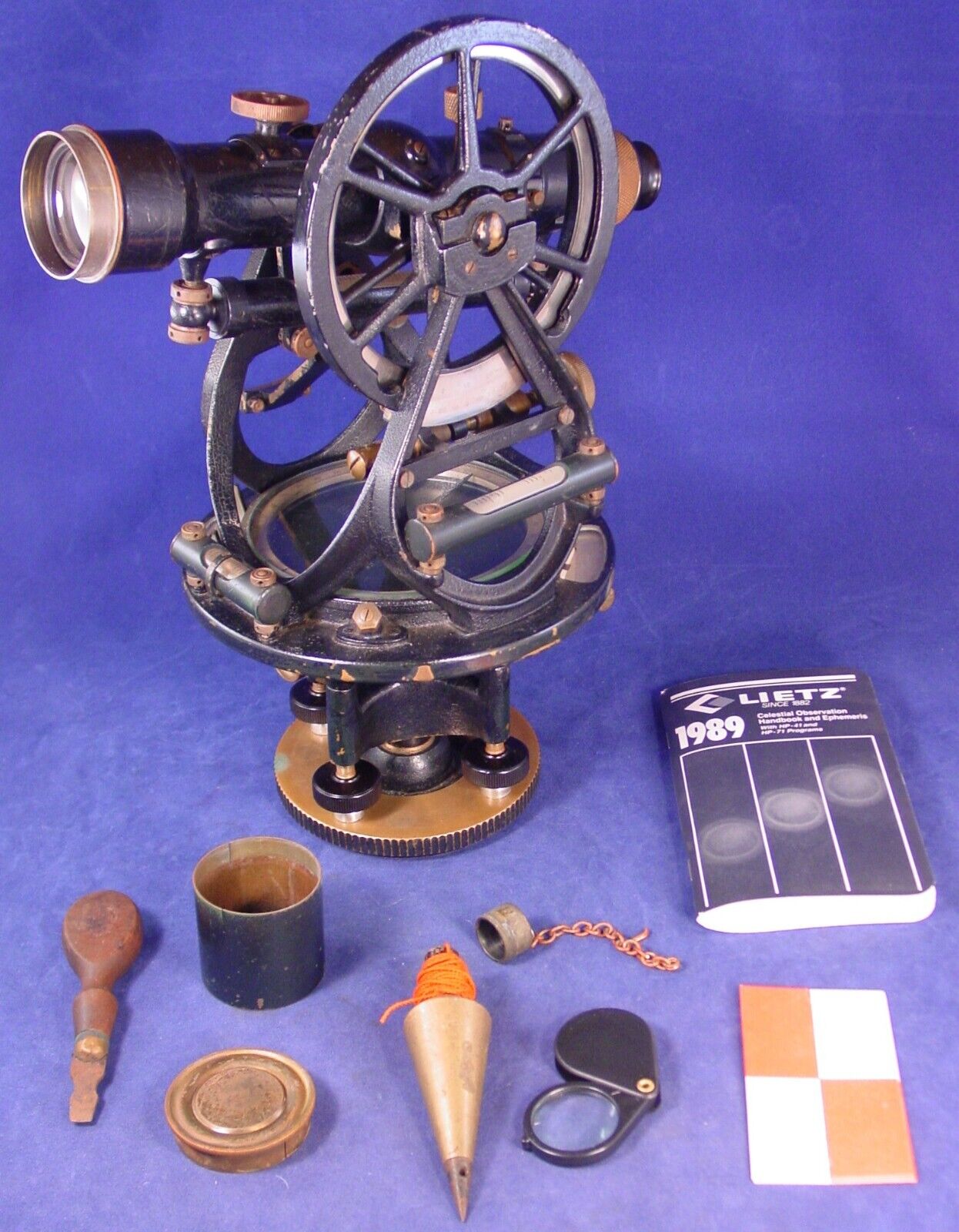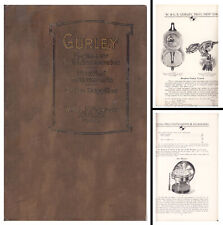1923 Gurley Surveying Smith Solar Transit w/box missing Smith attachment

When you click on links to various merchants on this site and make a purchase, this can result in this site earning a commission. Affiliate programs and affiliations include, but are not limited to, the eBay Partner Network.
1923 Gurley Surveying Smith Solar Transit w/box missing Smith attachment:
$1100.00
This is a nice example of a rare early Gurley Smith Solar transit however it is lacking the solar attachment. It has the solar set up on the side which is harder to find, if you have a Smith attachment the value of this transit complete is about double. Motions turn well, optics are good and cross hairs are in good shape, comes with its original box that is wide enough to accomodate the Smith attachment.
Postage will be $40 if within the US, more if you are outside the US.
Serialnumber None
Here is some information on thefirm of W. & L.E. Gurley:
William Gurley (1821–1887) graduated as a civil engineer fromRensselaer Polytechnic Institute. After going as far west as Michigan seekingemployment as an engineer and finding none, he returned to Troy and went towork for five years as a foreman for Oscar Hanks, a surveying instrumentmaker. In 1845, William formed a partnership with Jonas Phelps under thefirm name of Phelps & Gurley., worked for OscarHanks, a surveying instrument maker in Troy, New York, and then went intopartnership with Jonas H. Phelps, another local instrument maker. Lewis EphraimGurley (1826–1897) worked for Phelps & Gurley, earned a B.A. from UnionCollege in Schenectady and graduated with a Bachelorof Arts degree.He then rejoined the firm and in 1852 the Gurley brothers purchased JonasPhelps' interest in the business and the firm became known as W. & L. E.Gurley.
By the mid 19th century the transit had becomestandard for topographic surveys and, in terms of sales, was probably the mostimportant instrument. It was imperative that a solar transit be devised. By thelate 1860s the rush was 0 11. The first solar transit was invented by WilliamSchmolz, a San Francisco instrument maker patented by him on December 24, 1867.His solar consisted of an attachment, basically of Burt's 1850 configuration,mounted on top of the transit telescope at the axis. Schmolz's invention wasquickly followed by F. R. Seibert's solar transit in 1869, Benjamin Lyman'ssolar compass patented in 187 I, Harrison Pearson's solar attachment patentedin 1875, Buff & Berger's Pearson's solar attachment in 1878, and J. W.Holmes' solar theodolite also in 1878.
The Gurleys could not afford to be left out of themarket in such a vital area. In mid-1874William Gurley sent his brother-inlaw, attorney Charles A. Kenney, to visitWilliam Schmolz and to negotiate the purchase of his patent. On August 10, 1874Schmolz agreed to sell the rights to Kenney for $1,000 in gold coin. On October14, 1874 the patent for "Improvements in Solar and TransitInstrument" was transferred to Kenney, and from Kenney to W. & L.E.Gurley, with one provision: "But I, the said Schmolz, hereby reserve tomyself the privilege of manufacturing at my shop in said San Francisco, andusing the said improvement on one of said instruments and no more, in each andevery year hereafter."
Production of the Solar Attachments--which werealways referred to as the Burt Solar Attachment began right away. 8 solarattachments were mounted onto Engineers' Transits with either 4" or 5"needles, and onto Surveyors' Transits with either 5" or 5 1/2"needles. In addition, older instruments could sent to the factory to beretrofitted with the new device. The solar attachment was particularly usefulon the Light Mountain Transit introduced in 1876. In fact, of the approximately500 Light Mountain Transits made from 1876 to 1885, nearly 40% were solar.During that same period, approximately 70% of all solar transits made wereLight Mountain Solar Transits. The Solarattachments continued in production with only minor modifications until 1948.The original design had no cross support. The 1876 design includes an arcuatecross support. The 1883 version has a straight cross support. In the 1911-12 form the cross supportis aligned with the spindle.
W. & L.E. Gurley patented a Latitude Level onSeptember 2, 1884. Its purpose was to "recover the Latitude of a SolarTransit, without referring to the vertical arc; and generally for setting thetelescope at any desired angle in running grades, etc." By 1885 thisdevice had been redesigned to include two adjustment screws instead of one. TheLatitude Level was first offered in 1885, and was furnished, at no charge, onall solar transits made thereafter. TheR. M. Jones Latitude Arc was Patented on January 16, 1883. Gurley securedexclusive rights to its manufacture, and it first appeared in their 1884 Manual.This device had its own vertical arc and latitude level, and replaced thenormal corresponding equipment.
1923 Gurley Surveying Smith Solar Transit w/box missing Smith attachment:
$1100.00

Related Items:
1923 Gurley Surveying Smith Solar Transit w/box missing Smith attachment
$1100.00
Orig. W. & L.E. Gurley 1923 Catalogue of "Engineers Accessories" - mjdtoolparts
$124.50






